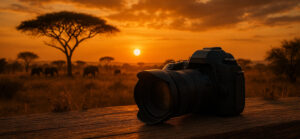Embarking on a photo safari in South Africa is a dream come true for many photography enthusiasts. This incredible journey offers a unique opportunity to capture the stunning wildlife and breathtaking landscapes of one of the most diverse ecosystems on the planet. As a passionate photographer, knowing what to expect and how to prepare can make your safari experience both successful and unforgettable. Here, we delve into crucial aspects of a South African photo safari to help you make the most of your adventure.
Choosing the Right Safari
South Africa boasts numerous game reserves and national parks, each offering distinctive experiences. The famous Kruger National Park is a popular choice, renowned for its vast size and diverse wildlife. Alternatively, consider private reserves like Sabi Sands or Timbavati, which offer more intimate encounters and off-road driving for better photographic opportunities.
When selecting a safari, consider factors such as the season, the type of accommodation, and the level of exclusivity you desire. Luxury lodges provide comfort and convenience, while tented camps offer a more rustic, immersive experience.
Best Time for Photography
The timing of your safari can significantly impact your photography results. The dry season, which spans from May to September, is often recommended for wildlife photography as animals congregate around waterholes, and the vegetation is less dense, providing unobstructed views. However, the wet season brings lush landscapes and dramatic skies, perfect for landscape photography.
Golden Hours
Regardless of the season, the golden hours—just after sunrise and before sunset—offer the best lighting conditions for photography. The soft, warm glow enhances the natural beauty of the landscape and wildlife, creating stunning images with minimal shadows.
Essential Photography Gear
Packing the right gear is critical for a successful photo safari. A telephoto lens is essential for capturing detailed shots of wildlife from a distance. Lenses with a focal length of 200mm to 500mm are ideal. A wide-angle lens can also be beneficial for capturing expansive landscapes and dramatic skies.
A sturdy tripod or monopod is invaluable for stabilizing your camera, especially during low-light conditions. Additionally, bring extra batteries and memory cards, as the opportunities for stunning shots are endless.
Understanding Animal Behavior
To capture truly compelling wildlife photographs, understanding animal behavior is key. Spend time observing your subjects to anticipate their movements and capture candid moments. Patience is essential; a well-timed shot can portray the grace of a leopard in motion or the playful antics of a troop of baboons.
Respect for Wildlife
While it’s tempting to get as close as possible for the perfect shot, always prioritize the safety and well-being of the animals. Follow the guidance of your safari guide, maintain a respectful distance, and avoid any actions that could disturb or stress the wildlife.
Cultural and Ethical Considerations
South Africa is rich in cultural diversity, and interacting with local communities can be a rewarding aspect of your trip. Be respectful and seek permission before photographing people. Understanding and respecting cultural norms and practices will enrich your experience and foster positive interactions.
Creating Lasting Memories
A photo safari in South Africa is more than just an opportunity to capture stunning images; it’s a chance to connect with nature in its purest form. The memories and photographs from this experience will be cherished for a lifetime. Embrace the adventure, let your creativity flow, and allow the magic of South Africa to inspire your photography.
With the right preparation, respect for wildlife, and an open heart, a photo safari in South Africa can be an unparalleled journey of discovery and creativity. Happy shooting!


